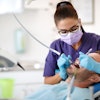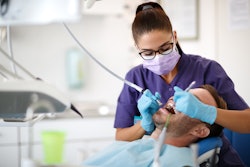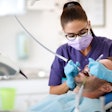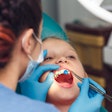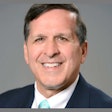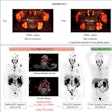From boomers to Gen Z, adults are skipping the dentist but for different reasons, according to an article published on September 18 in Tufts Now. Specifically, young adults -- 1 in 3 -- reported not seeing a dentist in the past year.
This study, published in Frontiers in Oral Health, is believed to be the first of its kind to examine individuals' economic and social status, their access to dental care, and self-reported health challenges.
“This is very troubling,” Dr. Yau-Hua Yu, an associate professor of periodontology at Tuft’s School of Dental Medicine, said in the story.
Young adults ages 18 to 35 had the lowest prevalence of visiting a physician (85.3%) or a dentist (67.8%) in the last year. This age group had the highest rate of their insurance not being accepted (19.3%), an inability to afford the insurance co-pay (63.6%), and an increased likelihood of using emergency or urgent care services (17%).
When dissecting the results by income, there was a significant difference in the number of adults who visited a dentist in the past year. Fifty-five percent of adults earning less than $35,000 annually visited a dentist, 73% of those earning between $35,000 and $75,000 did so, 84.2% of those earning between $75,000 and $150,000 visited a clinician, and 89.5% of those earning $150,000 or more annually saw a dentist.
Those earning less than $35,000 were more likely to use emergency or urgent care services (12.7%), reported a higher rate of their insurance not being accepted (18.8%), and expressed concern about co-pay affordability (59.5%). Yu also reported that young adults who didn’t visit the dentist reported poor mental health or memory problems and were more likely to be renters, uninsured, and racially diverse.
Previous research from Yu has potentially linked poor oral health to a shortened life expectancy and other adverse health effects.
“The presented findings highlighted an under detected vulnerable group in young adulthood (age 18–35 years old) that has slightly different SDOH [social determinants of health] profiles than the rest of the population. Given our rapidly aging population structure, the desperate need for this younger age group who will be our prime source for societal productivity should not be ignored,” Yu wrote.
Other intriguing generational differences were uncovered. While baby boomers -- adults age 66 and older -- were more likely to have insurance and own a home, they reported more disabilities, impeding their ability to visit a dentist.
“Our findings show the urgent need to integrate dental care into overall health care,” Yu said. “They also suggest that interventions must be tailored not only to income, but to life stage and cumulative disadvantage.”
Though challenges remain, there are solutions that need to be considered.
The strategy should include a multilayered policy response that expands public dental insurance, reduces administrative barriers to care, supports mobile and community-based services, and integrates oral health equity into public health surveillance and primary care programs. This can be achieved through dental service organizations, federally qualified health centers, and nontraditional networks like mobile clinics, school programs, and teledentistry programs, Yu said.
“When dental care is rooted in trusted community spaces, it feels more familiar and supportive,” Yu said. “That lowers the barriers of fear, inconvenience, and cost uncertainty that may keep some young adults away -- and it helps them shift from waiting until there’s an emergency to hopefully seeking regular, preventive care.”
